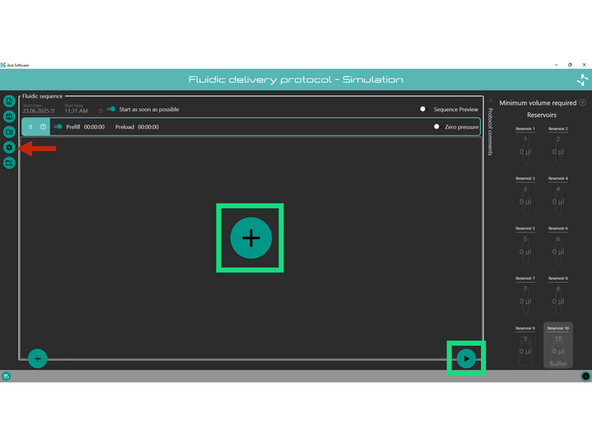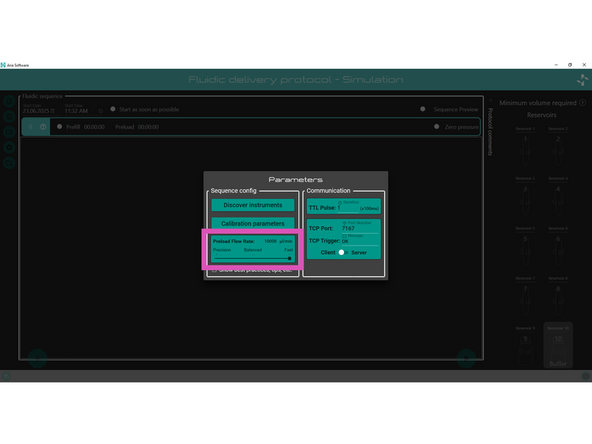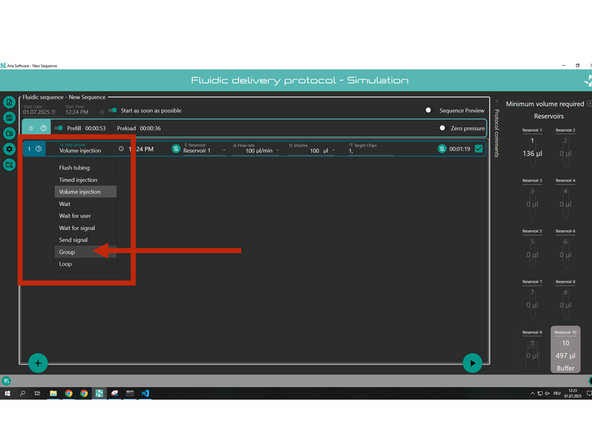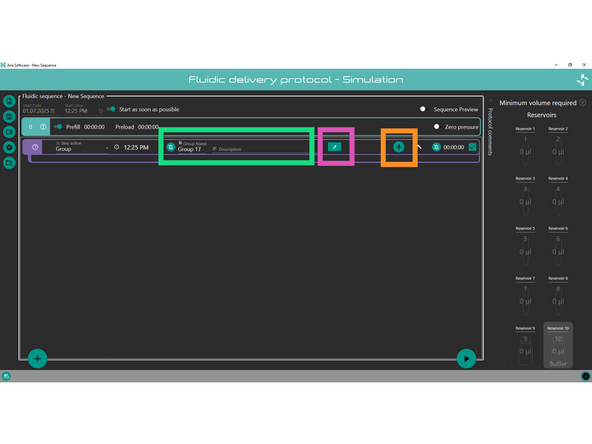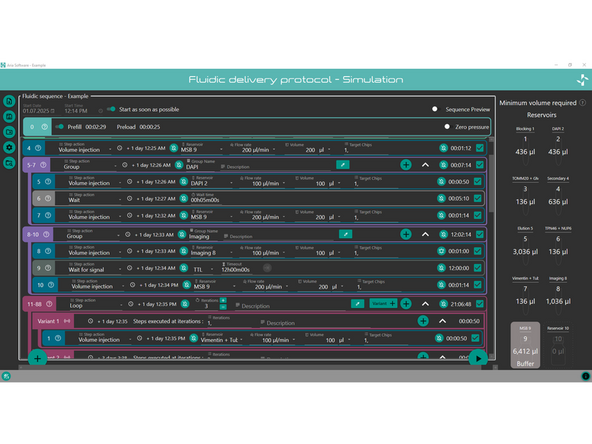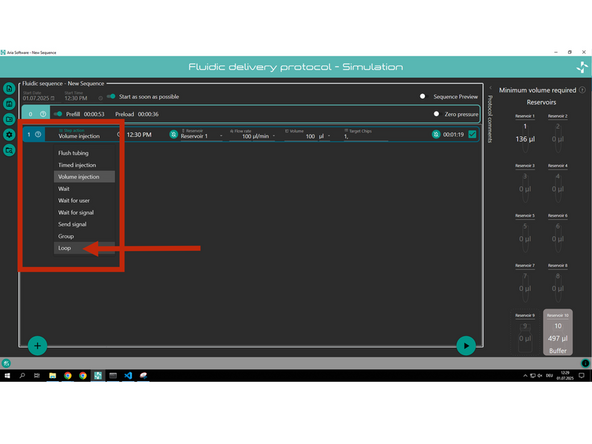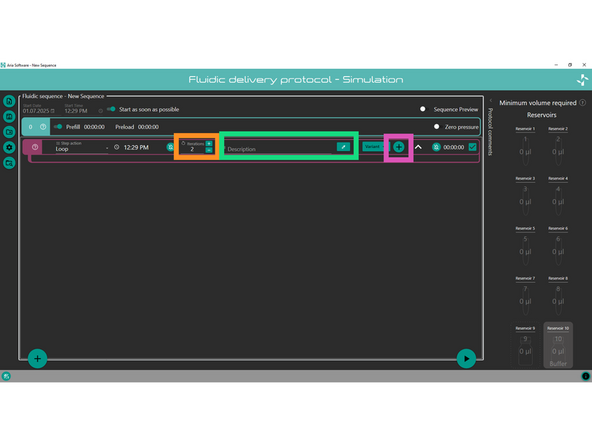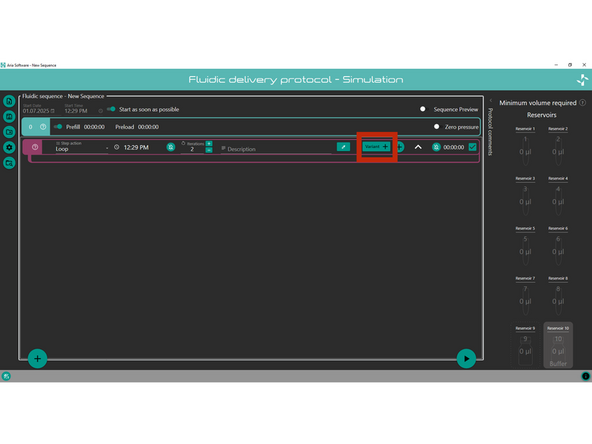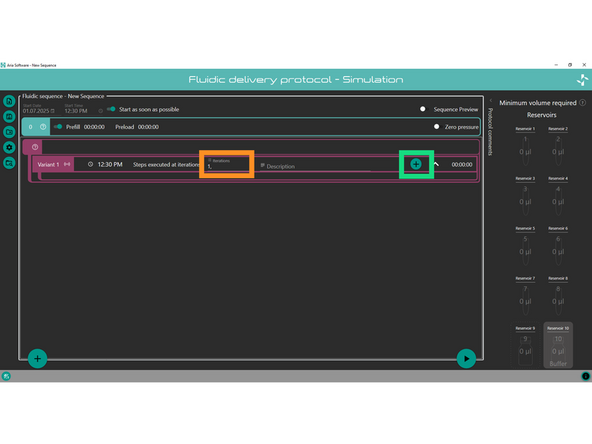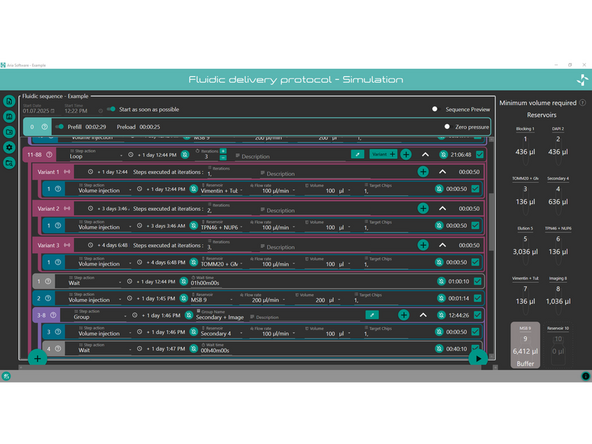-
-
Press the gear icon
-
Set the "Preload Flow Rate" to "Fast"
-
Press either of the two "+" to start adding elements to the sequnce
-
-
-
Create groups to keep you code tidy and easily readable. Furthermore you can copy/duplicate the entire group and paste it somewhere else, which saves time.
-
Consult the next step to see a more detailed guide on how to use groups.
-
Create loops for parts of the sequence that is repeated multiple times. Use variants within loops to loop over multiple reagents, outlets or other things.
-
Consult steps 4 and 5 to see a more detailed guide on how to use loops and variants.
-
-
-
Create a group by selecting "Group" in the "Step Action" drop-down menu.
-
You can add elements to the group by pressing the "+" or by dragging and dropping existing elements into the group.
-
You can rename and describe the group.
-
You can give the group a color.
-
In the last image you can see two example groups. Please note that this sequence was written for a Nikon microscope, yours may look different depending on which microscope you use.
-
-
-
Create a loop by selecting "Loop" in the "Step Action" drop-down menu.
-
Set the number of iterations the loop should perform.
-
You can write a description and give the loop a color.
-
You can add steps to the loop by either pressing the "+" or by drag and dropping existing elements into the variant.
-
-
-
A variant is a sequence within a loop that is only executed at the specified iterations. This allows you to loop over e.g. different antibodies.
-
Press "Variant +" to add a variant.
-
Specify at which iterations the variant should be executed.
-
A variant can be executed during multiple iterations or just one.
-
Add elements to the variant by either pressing "+" or by drag and dropping existing elements into the variant.
-
In the last image you can see an example of a loop containing variants.
-
Almost done!
Finish Line
